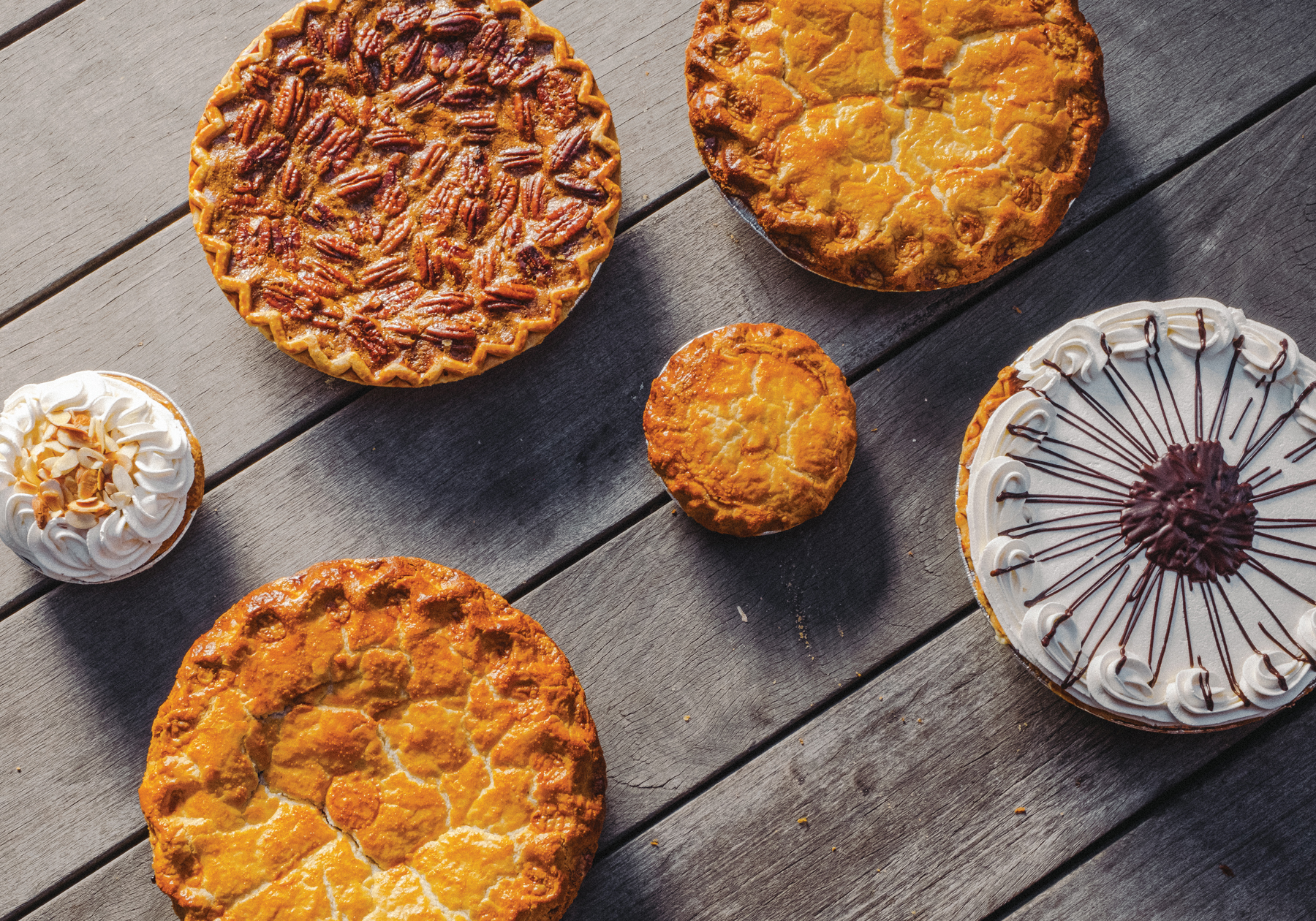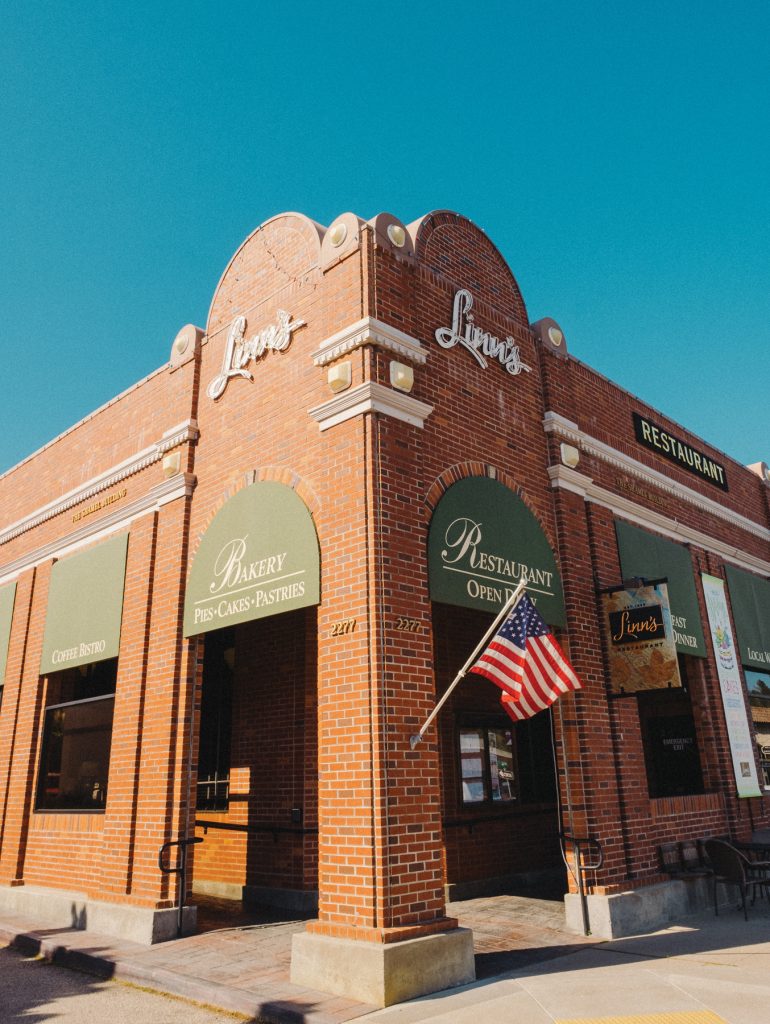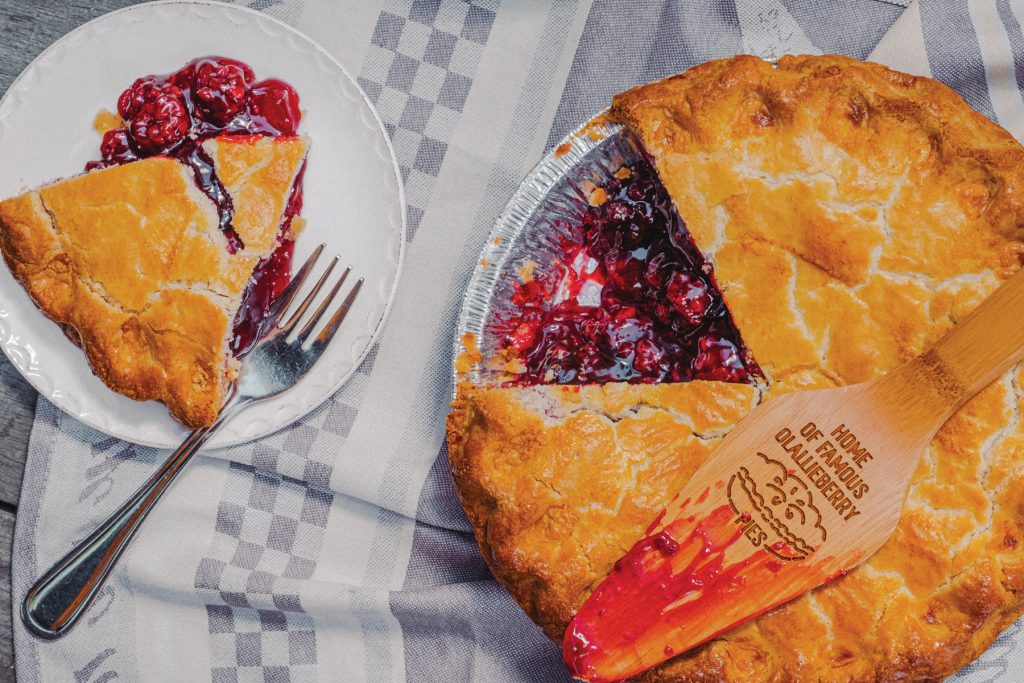
How Linn’s Made Cambria the Pie Capital of the Coast
Pies are big business in America, with approximately $700 million in pies, or 186 million units, sold in grocery stores every year, according to the American Pie Council (you read that right. We have an American Pie Council). More than 70 percent of those are sold during the months of November and December, when most American households have a pie in their home. That number doesn’t include distribution through restaurants, food service, price clubs — only grocery stores. If you want to talk about price clubs, just last year in 2018, Costco made more than 6 millionpumpkin pies, with close to 2.5 million of those in the week before Thanksgiving alone. If you lined up the number of pies sold at U.S. grocery stores in one year, they would circle the globe and then some

For us Central Coasters, holidays here are synonymous with Linn’s of Cambriapies — it’s easy to spot one being carried into a gathering, or see that colorful packaging in the freezer section of the local grocery stores. Drive down Main Street in Cambria and there always seems to be a gathering of people right outside Linn’s Restaurant. I thought Linn’s was a treasured secret limited to those in our area, though it turns out, we’re not the only ones buying Linn’s.
Rooted in this small coastal town of Cambria, with a population of fewer than 7,000, Linn’s is a superstar in the pie world. Food Network host Marc Summers called out Linn’s pies during a segment of the show “The Best Thing I Ever Ate,” back in 2010. Before that, Linn’s was featured in a “Viewer’s Choice” segment of the show “Food Finds,” also on the Food Network. Just last month, actor Erik Estrada, best known for his lead role in the popular ’80s sitcom “CHiPs,” passed through the restaurant, sharing that he always has to stop in when driving south off the 101.
Because of Linn’s, Cambria is now only second in bakery pie production volume in California, coming in behind the town of Julian in Southern California, though with its crisp mountain air 4,000 feet above sea level, Julian is ideal for growing apples, making apple pies their bread and butter. And with numerous popular bakeries there like Julian Pie Company, Moms Pies and Apple Alley Bakery, it’s a team effort to produce the pies that have become a tourist attraction. In Cambria, Linn’s is it, and has made their mark instead with a more inconspicuous fruit, the olallieberry.
The olallieberry is synonymous with Linn’s, which popularized the berry to almost nationwide recognition. When the Linn family, led by parents John and Renee, moved to Cambria in 1977 from Denver, onto a vacant plot of farmland on Santa Rosa Creek Road (which is now just five miles away from Linn’s Restaurant), they learned quickly what they could and could not grow there, and what it would take to manage a farm. With almost no farming experience prior to moving onto the land, they refurbished an old well on the property, ran trenches, drove tractors, planted fruit trees, built water systems and fences and they were in business — all with three young children in tow.

At the start, John, not knowing yet what he was going to plant, fortuitously ran into a farm advisor who suggested growing the olallieberry, originally from Oregon. It was tart, great for baking and still relatively unknown. It was a commodity that could fetch some money — being a bit of a different berry, it may just attract that attention needed from customers.
It was not all positive though; olallieberries are only ripe for one month (typically in June), and then the producer has to survive on that bounty for as long as possible. Now, Linn’s takes these berries and freezes them, for use throughout the year. When making olallieberry jams and pies, the team prefers to work with frozen berries anyway; fresh berries get pulverized when handled too strongly. The frozen berries are preserved whole to keep the nature of the fruit intact.
Linn’s only grows 3 percent of the amount of olallieberries needed to keep up with the demand, on just two acres of their land. The farm property is mainly on a hillside, and berries grow on flatlands (Linn’s does produce a surplus of other fruits and vegetables outside of the berries, which they use exclusively at the restaurant). So, Linn’s has consistently turned to a small network of other farms such as Gizdich Ranch in Watsonville to buy their olallieberries, purchasing close to 100,000 pounds a year. A vendor recently called looking to sell 12,000 pounds of olallieberries, and John bought them on the spot — they can never have too many olallieberries. The pies are made in Linn’s 8,000-square-foot production kitchen in the Tin City area of Cambria.
Olallieberries, and pies for that matter, aren’t the only focus of Linn’s. 60 percent of the company’s income comes from their full-service restaurant in Cambria (and their whole pies are sold via the café behind the restaurant, while its gourmet goods store sells all of the jams, using a variety of fruit including peaches, cherries, apples and apricots). About 15 percent of revenue comes from the pies and jams sold via wholesale to retailers like Vons, California Fresh, Costco and Albertsons (though the farthest south they distribute to is the Albertsons in Carpinteria, and the farthest north is the Albertsons in Paso Robles. The brand sells much stronger locally due to the product recognition and also welcomes the marketing power that this provides, drawing people into the Cambria restaurant). Much of the remainder of business comes from mail order sales, which in addition to pies and jams, encompasses other baked goods and pantry items. Linn’s also produces the jams sold under the Knott’s Berry Farm label — the company approached Linn’s eight years ago to produce for them — as well as a handful of other private label accounts. But the olallieberry is still Linn’s star, outselling other fruit-based items, five to one.

At the height of the season Linn’s makes about 150 pies a day, compared to the 30 to 50 pies per day produced during the “off-season,” though there really is no off-season. It’s a regular occurrence for guests to come into the café armed with freezer bags or newspapers to wrap the pies in and hand carry them back to L.A. or San Francisco. Also around the holidays, the warehouse manager ships out 300 to 400 mail orders a day, five days a week, while in “standard,” non-holiday time, an average of 50 packages are sent out per day, two to three days a week.
It takes three pie rollers, five filler makers, one packager, one labeler, one warehouse manager and a support team both on the production side as well as at the farms to make that $20 pie we find at our local grocery store or at Linn’s in Cambria. It is their work on the hand-rolled crust and actual fruit content that produces the high quality pie that we eat together. It’s a handmade pie made of California produce, with a local, family-owned business behind it, farming since 1977. This is perhaps why 90 percent of Americans agree that a slice of pie represents one of the simple pleasures in life (thanks, American Pie Council!).

